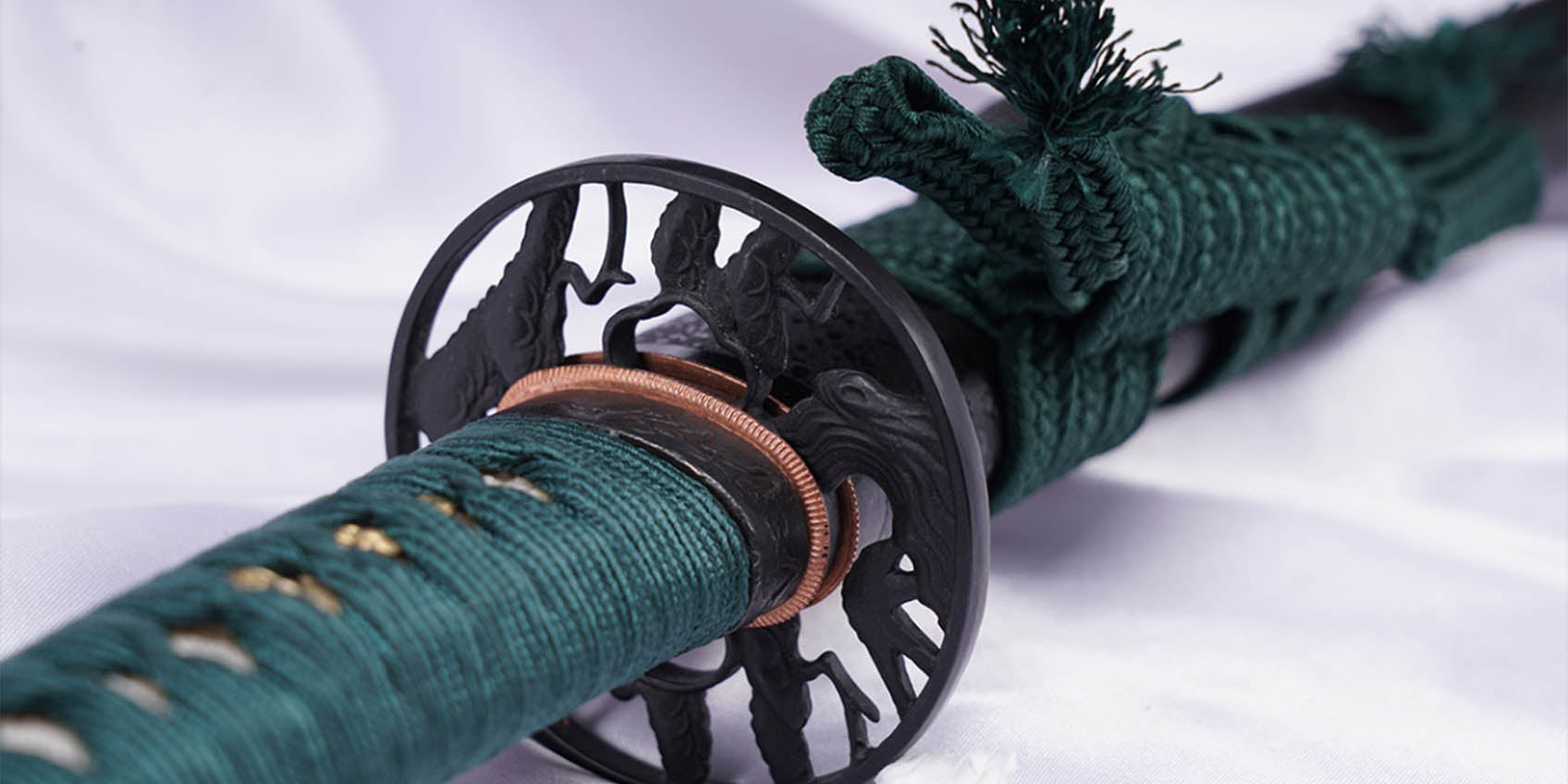Wakizashi Sword: The Samurai’s Trusted Blade of Honor and Tradition

The Wakizashi , one of the most iconic traditional Japanese swords, has played a significant role in the life and culture of the samurai. As a Japanese short sword, it is not only a functional weapon but also a powerful symbol of honor, loyalty, and martial discipline. Typically measuring between 30 to 60 cm in blade length, the wakizashi sword is shorter than the katana, offering greater agility and versatility. Over time, the wakizashi evolved from a practical tool to an integral part of samurai identity and ceremonial tradition.
What Was the Purpose of the Wakizashi Sword?
The wakizashi served multiple purposes and was the second sword in the samurai’s iconic daishō pairing of long and short swords. Its uses included:
-
Companion to the Katana
The wakizashi was traditionally worn alongside the katana as part of the daishō set. While the katana served as the primary weapon for open battle, the wakizashi sword acted as a backup weapon, ideal for close-quarters combat or when the katana was lost or damaged. -
Indoors and Formal Occasions
In accordance with etiquette and safety, samurai would leave their katana at the entrance of a building and enter carrying only their wakizashi. This made the wakizashi the indoor sword of the samurai, still allowing them to retain their defense and status. -
Used in Seppuku (Ritual Suicide)
The wakizashi was commonly used in seppuku, the ritual suicide performed by samurai to restore honor in the face of disgrace or failure. The wakizashi blade played a central role in this deeply cultural and spiritual act, symbolizing the ultimate form of loyalty and self-discipline. -
Daily Utility and Self-Defense
Due to its manageable length, the wakizashi was also used for everyday tasks and personal defense, especially in urban settings where long swords were impractical.
The History and Uses of the Wakizashi
The Wakizashi, originally conceived as the companion sword of the samurai, was typically worn alongside the Katana, forming the renowned 'Daisho' pair — a symbol of the samurai class. This combination wasn’t merely practical, but also provided strategic flexibility and tactical advantage in battle.
With a blade length generally ranging from 30 to 60 centimeters, the shorter Wakizashi excelled in close-quarters combat, making it an indispensable weapon in scenarios requiring quick reflexes or where space was limited. In tight environments such as doorways or staircases, the Wakizashi’s maneuverability made it the ideal choice when engaging enemies at close range.
On the battlefield, the Wakizashi served multiple purposes — from slashing to thrusting — and was often employed in assassinations due to its compact size. Its shorter blade made it especially effective in confined spaces where a longer Katana would be cumbersome. Moreover, the Wakizashi held a solemn cultural role as the preferred blade for Seppuku, the ritual suicide performed by samurai to restore honor after disgrace or failure. In this context, the Wakizashi became a poignant symbol of loyalty, dignity, and courage, deeply embedded in the samurai code of Bushido.
Beyond its combat applications, the Wakizashi was integral to daily life and ceremonial practices. Samurai often carried the Wakizashi indoors, where bringing a full-sized Katana was considered inappropriate. Wearing a Wakizashi was not only a mark of rank and status but also a reflection of one’s adherence to the samurai code. In formal and social contexts, it played a ritualistic role, symbolizing the samurai's heritage, discipline, and cultural values.
In addition to its battlefield and ceremonial importance, the Wakizashi often served as a family heirloom, passed down through generations. Each blade carried with it the honor, legacy, and stories of the family line, transforming it into a treasured cultural artifact. Today, the Wakizashi is not just seen as a functional weapon, but also as a coveted item among collectors and martial arts enthusiasts, revered for its craftsmanship, symbolism, and historical resonance.
Conclusion
The Wakizashi, as the samurai’s companion blade, is far more than a secondary weapon. It represents a convergence of martial utility and profound cultural symbolism. Its versatility in combat, deep connection to tradition, and status as a symbol of the samurai spirit and Japanese heritage have secured its place in both history and modern appreciation. Whether as a historical artifact, a collector’s piece, or a tool in martial training, the Wakizashi continues to embody the values and legacy of Japan’s warrior class.
Design and Features of the Wakizashi
The Wakizashi is a masterful blend of practical design and traditional Japanese aesthetics. As an essential short sword worn by samurai, the Wakizashi typically measures between 30 to 60 centimeters in length, making it shorter than the Katana. This compact size allowed for easy carry and quick draw, which demanded a design that prioritized agility, durability, and elegance.
To begin with, most Wakizashi blades are forged from high-carbon steel, with 1095 high carbon steel being a common and preferred choice. Known for its exceptional hardness and edge retention, 1095 steel ensures that the blade remains sharp even under intense use and resists rolling or dulling. It also responds excellently to quenching, making it a top-tier material for crafting premium Japanese swords.
A defining feature of high-quality Wakizashi blades is the use of clay tempering (yaki-ire) — a traditional Japanese heat treatment method. During this process, skilled artisans coat the blade with layers of natural clay in varying thicknesses before heating and rapidly quenching it. The edge, cooled quickly, becomes extremely hard and razor-sharp, while the spine, cooled more slowly, retains toughness and flexibility. This not only enhances the blade’s combat performance but also produces the iconic hamon — the wavy temper line along the blade — admired for both its beauty and uniqueness.
In addition, the blade undergoes a meticulous Sashikomi A+ grade polish, a high-level traditional Japanese polishing method. This multi-stage, hand-executed polishing process reveals the intricate grain pattern of the steel and gives the blade a mirror-like sheen while maintaining the natural texture of the hamon. Unlike machine polishing, Sashikomi polishing preserves the blade’s character and craftsmanship, making it highly prized by collectors and martial artists alike.
For carrying, the Wakizashi is traditionally worn in the sashikomi (thrust-in) style, tucked into the obi (belt). This method not only served a functional role — allowing the wearer to swiftly draw the sword in emergencies — but also symbolized readiness and status. In traditional Japanese society, samurai were permitted to carry the Wakizashi indoors while the Katana remained outside, making the Wakizashi a visible indicator of rank and identity during formal occasions.
In summary, the Wakizashi is not merely a utilitarian short sword but a finely crafted weapon that fuses artistic beauty, battlefield effectiveness, and cultural symbolism. Whether used in martial arts training, showcased in a collection, or offered as a prestigious gift, the Wakizashi continues to embody timeless value and allure.
COOLKATANA Hand-Forged Wakizashi Overview
Our Hand Forged Japanese Wakizashi Sword combines battle-readiness with artistic beauty, crafted for martial artists, collectors, and fans of traditional Japanese swordsmanship.
-
Blade Material: Forged from 1095 high carbon steel, ensuring long-lasting sharpness and cutting performance.
-
Craftsmanship: Hand-forged by skilled swordsmiths using traditional techniques that enhance strength, symmetry, and aesthetic appeal.
-
Clay Tempering: Traditional clay tempering results in a stunning hamon line and improves flexibility and edge hardness.
-
Sashikomi Polish: Achieves a smooth, mirror-like finish while highlighting the hamon and forging grain.
-
Practical Mounting: Designed for sashikomi-style wear, allowing quick-draw readiness and traditional display.
-
Artistic Scabbard: The saya features elegant finishes with classical patterns, suitable for dojo training, home decoration, or ceremonial use.
This clay tempered wakizashi is not just a weapon—it is a cultural expression and a work of art. Ideal for practitioners of Japanese sword arts, history enthusiasts, or anyone seeking to own a piece of samurai heritage.
Hand Forged Japanese Wakizashi Sword 1095 High Carbon Steel Sashikomi A+ Polishing Grade Clay Tempered
Cultural and Collectible Value of the Wakizashi
The wakizashi sword embodies the essence of samurai culture, encapsulating themes of loyalty, honor, and duty. Its symbolic value, combined with meticulous craftsmanship, gives it high status among Japanese sword collectors. Whether displayed as home décor or used in martial arts practice, the wakizashi adds an element of tradition and legacy to any environment.
Final Thoughts
If you're a lover of samurai weapons, a student of Japanese history, or a collector of hand-forged swords, the Hand Forged Japanese Wakizashi Sword is an exceptional addition to your collection. Not only is it a formidable tool, but also a beautifully crafted artifact steeped in cultural significance. Owning a wakizashi means connecting with the spirit of the samurai—one of honor, discipline, and timeless craftsmanship.









